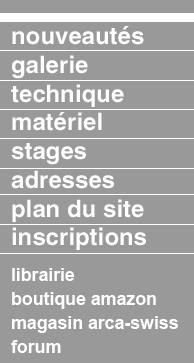Daguerreotypes from
Eric Mertens

How did you come to the daguerreotype process?
During my final year at California
College of the Arts I began experimenting with alternative processes
to connect more with the physical aspects of photography. I loved
the thrill of the physical process of working with wet-plate
collodion, but I was looking for more. The obvious next step for me
was daguerreotypy.
In 2003 I took a trip to Toronto to
see Mike Robinson for a daguerreotype tutorial. That’s really where
it started for me.
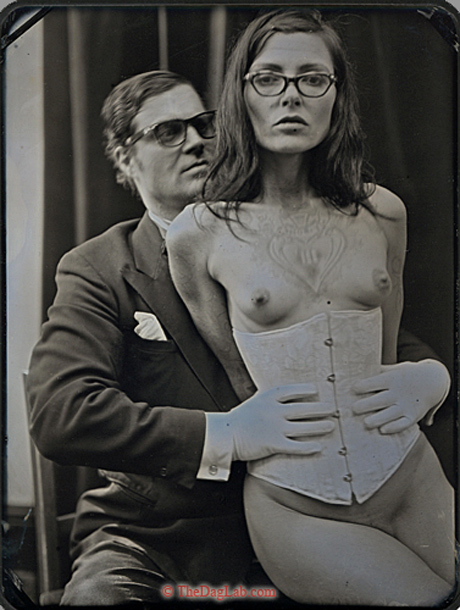
Which proportion of your time as a photographer do you devote to the
daguerreotype process?
I currently devote 100% of my time to
daguerreotypy with a portrait studio in my home. I am not really
interested in other techniques, nor do I have the equipment for
them.
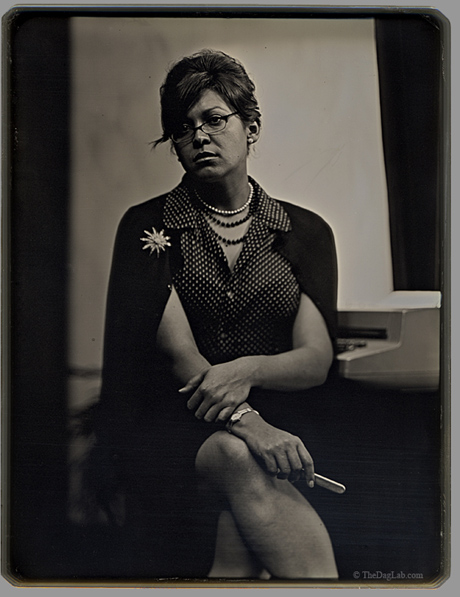
With which equipment do you make these daguerreotypes?
Most of my work is shot with an 8x10
Deardorff. I have a 4x5 Bush view camera as well as a Lewis
Daguerrian camera replica, all of which accommodate new and old
lenses. My sensitizing boxes and mercury pot are from
Century Darkroom. I
was actually trained as a laser technologist and I’m pretty handy,
so I build all of the rest of the equipment myself.
Have you established any bridges between your practice as a
daguerreotypist and digital photography?
To put it simply – no. I have yet to
find a way to utilize digital photography in a way to actually make
the daguerreotype process easier or better. Other than scanning my
daguerreotypes, I don’t really use digital technology at all. If it
wasn’t invented in the 19th century, I don’t need it!

What are the advantages and drawbacks of the daguerreotype as
compared to other photographic processes?
Aside from its unmatchable detail and
beauty, a daguerreotype is a one-of-a-kind object. To me that is a
rarity in photography, especially in the digital age.
The main drawbacks are that it’s hard
to carry the camera around to different locations, and it’s almost
impossible to get someone to sit completely still for 17 to 25
seconds.
Do you think that
certain subjects are particularly suitable for daguerreotypes?
I’ve tended to focus on portraiture.
I’ve photographed a lot of nudes, and I am currently working on a
series called “working” that focuses on people doing their jobs.
It’s probably not so good for photographing an auto race.
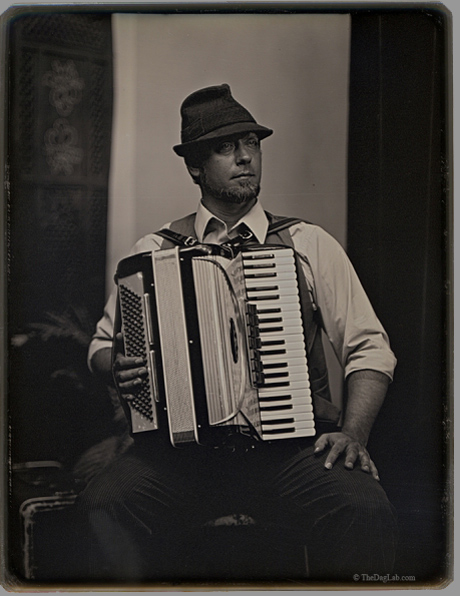
What are the main features of a good daguerreotype in your opinion?
Technical features would be good
contrast with clear blacks, strong white highlights with a warm hue
to them and a crisp clarity overall. But of course this can all go
out the window depending on the subject matter. I don’t think there
is a single formula for all daguerreotypes.
How do you see the
future of daguerreotypes?
Funny question – asking about the
future of a technique that’s been outmoded for over a century! It’s
a process that has for the most part already been perfected and
there is not much room left for any technological improvements. So
the process itself will pretty much stay the same as it has for over
160 years. There may be more of an interest in practicing
daguerreotypy as society realizes the importance of preserving and
protecting the remaining originals, but it will still be limited to
a small group of people patient enough to make it work. In the age
of digital cameras, daguerreotypes are pretty far removed from the
mainstream of photography.
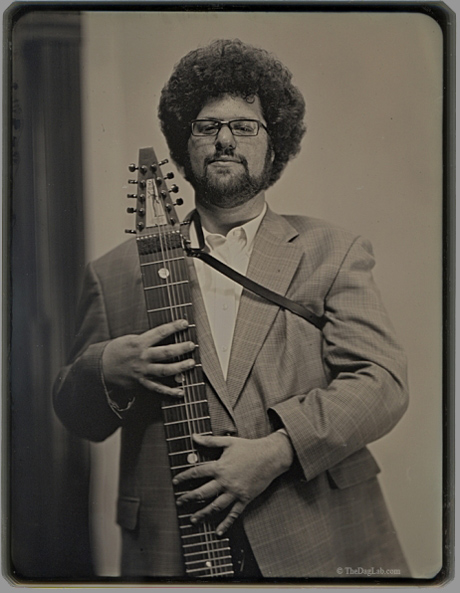
Would you have any advice to young photographers wishing to make
daguerreotypes? Be aware that the
process is often more important than the final product. It’s so
labor-intensive that you may spend hours working on a single
picture. It’s important to take good notes at every step and to
refuse to compromise. And never feel like you have mastered the
process because you will be reminded that you haven’t.
voir également sur la daguerréotypie :
daguerreotypes de sean culver
eric-mertens : daguerréotypes
jerry spagnoli : daguerréotypes
marc kereun : daguerréotypes
marc kereun : l'exposition de daguerréotypes contemporains de Bry sur Marne
marc kereun : technique du daguerréotype
marinus j. ortelee : daguerréotypes
patrick bailly-maitre-grand : daguerréotypes
reproduire pour exposer
rob mcelroy : daguerréotypes
|
